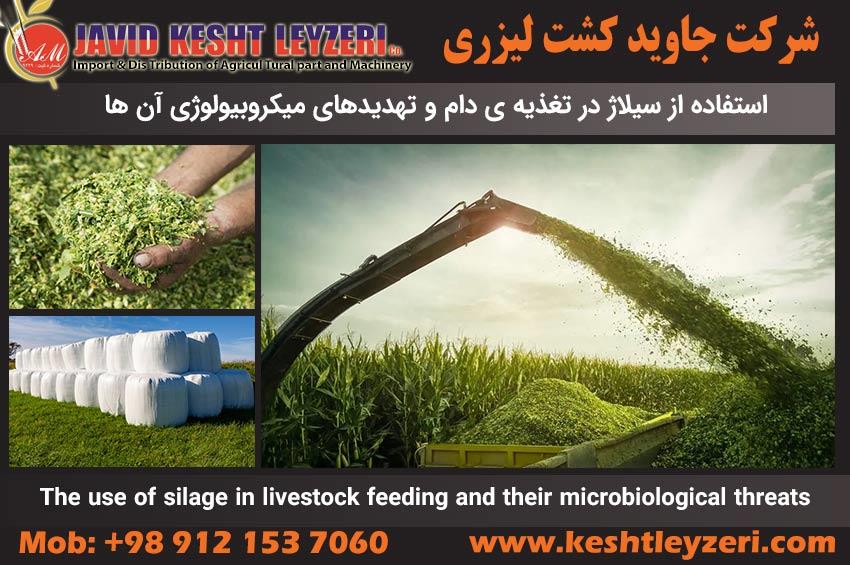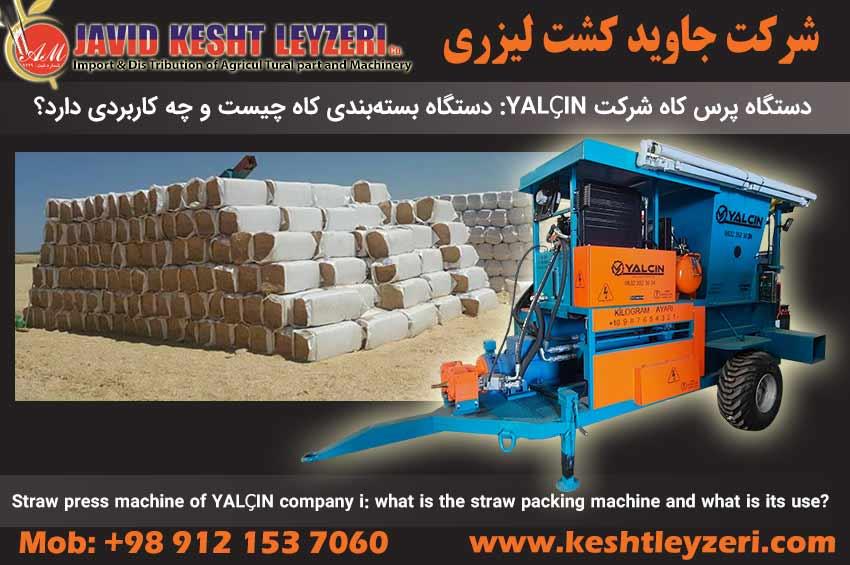
The use of silage in livestock feeding and their microbiological threats
javid keshtleyzeri Co.ltd
Silages are the final product of anaerobic fermentation of feed raw materials such as corn, alfalfa, distilled seeds from the aquaculture industry and sugar beet pulp. Silages are usually feeds with moisture between 30 and 80% and rich in nutrients. Silo conditions are very suitable for the growth of microorganisms and fungi. It can be said that microbiological threats of silos are the main concern in the preparation and practical use of silos. Other important concerns about the quality of corn fodder and its silage depend on many factors.
Important concerns about the quality of corn fodder and its silage
Among these things can be:
1) How to harvest fodder and loading, which must be done very accurately, quickly and with planning (due to the accumulation of pollution and the presence of spores at the junction of the corn stem with the ground, there are many recommendations to harvest corn fodder from a distance of 8 up to 12 cm from the soil surface),
2) The humidity of the fodder, which should be 65-70%. If the amount of moisture is more, it will cause problems due to excessive acidity.
3) how to chop,
4) Irrigation conditions, which should not have been done at least 7 to 10 days before harvesting from the irrigation field,
5) The distance from the farm to the livestock farm, which, in addition to increasing the cost of transportation, causes incomplete fermentation during the journey and causes a sharp drop in the quality of silage.
6) The type of silo and the method of silage that concrete silos must be free of cracks and voids, and in bag silos, the moisture content of the fodder is very important.
7) The size of the silo must be proportional to the daily consumption of the silo (the size of the silo and the conditions for accepting corn fodder should be such that the time of filling and closing the silo does not take more than 5 days) he pointed out.
In general, well-ensilated forage can be used for all animals, but ensiled green fodder is an ideal forage for ruminants, especially dairy cows. The main problem in feeding silage materials to dairy cows is the unpleasant smell that such materials can have on the milk. Therefore, it is suggested that such materials be used after milking the cow.
Ensiled plants are also used by calves as complete food with good digestion and rich in nutrients and vitamins. Ensiled fodder of wheat family, chickpeas, seeded corn and millet are included in the diet of calves in appropriate amount, but siled fodder of sugar beet leaves is avoided. Silage fodder mixed with straw and other wood fodder is better used, and using silage fodder alone will not be efficient.
The most important harmful microorganisms in silages
The most important harmful microorganisms in silages include the following:
Listeria monocytogenes
- Clostridia
Clostridium botulinum
- Enterobacteria
- Escherichia coli
Yeast
- Mushrooms
Fungi and mycotoxins, a constant threat in silage
Fungi and mycotoxins in silos have also been a constant threat to silages. Inside the silo, according to the conditions governing them, various types of fungi will have the ability to grow, which leads to the production of different mycotoxins.
The most important fungi that threaten silages include the following:
-Aspergillus (Aspergillus): Aspergillus causes a yellow to dark green appearance in silage, which produces mycotoxins aflatoxin (B1, B2, G1, G2), ochratoxin A, patulin, cyclopiazonic acid.
Claviceps: Claviceps causes a dark brown to black color in the silo. Ergot alkaloids are produced by this fungus.
Fusarium: Fusarium fungi cause yellow color in silage, which mycotoxins fumonsin (3B1, B2, B), group A trichocenes (2-T toxin, 2-HT toxin and Diacetoxyscirpenol) and Group B produces trichocenes (nivalenol, doxynivalenol, fusarenon X and ziralenone).
Penicillium: Penicillium fungus causes white, green or blue color in silage, which leads to the production of mycotoxins ochratoxin, citrinin, cyclopiazonic acid and patulin.
Neotyphodium: The color created by Neotyphodium is highly variable and ergot alkaloids are the most important mycotoxins produced by them.
Control and prevention of the effects of microorganisms in silage materials
In general, there can be three main solutions to control and prevent the effects of microorganisms in silage materials.
A: Applying the correct conditions for making silage
The first solution is to apply the correct conditions for making silage. Adjusting the amount of moisture, pH, temperature, oxygen, compaction, etc. are the most important things that should be considered when preparing silage. The most important factor in this category is the moisture content of the silage material.
B: Use of silage additives
The second solution is to use silage additives. It is necessary to use additives before ensiling to improve the concentration of soluble carbohydrates and lactic acid bacteria. Some side feeds are well ensiled with chemical additives and improve digestibility and silage quality. Although the use of chemical additives is limited due to the corrosive effect, biological additives are often preferred. Characteristics such as sufficient amounts of substrate, dry matter and low buffer capacity combine together to create anaerobic conditions and cause an effective fermentation.
In anaerobic conditions, the activity of plant enzymes decreases, plant enzymes cause an increase in the temperature inside the silage and ultimately cause a decrease in the dry matter and nutritional value of the silage. Inside the silo, there is competition between lactate-producing and lactate-consuming bacteria, lactate-producing bacteria convert sugars (mainly glucose and sugars) into lactate. If Lactobacillus bacteria proliferate, the pH of the silage will drop below 4, preserving plant nutrients. Acidic conditions encourage lactate-consuming bacteria such as clostridia, which cause the breakdown of amino acids and ultimately produce low-quality nutrients, but high silage moisture and low pH reduce the activity of clostridia.
Silage additives are in five categories:
1 - stimulating the growth of lactic acid bacteria: whey, molasses, enzyme
2 - Fermentation inhibitor that partially or completely prevents the growth of microorganisms.
3 - Prevention of aerobic corruption
4- Nutrients that increase the nutritional value of fodder after silage.
5- Moisture absorbent materials are divided to prevent the loss of afterwater through the increase of silage dry matter.
Evaluation of determining the amount of lactic acid and volatile fatty acids (acetic acid, propionic acid and butyric acid) in ensiled fodder, on the one hand, to control the moisture level, and on the other hand, the amount of these acids due to the silage preparation technology, which will affect the consumption of fodder. It is important. For example, if the threshing operation is done well, anaerobic fermentations are done well, as a result, the amount of lactic acid produced increases and the quality of the silage material becomes favorable.
Butyric acid, which is produced as a result of the activity of microorganisms of the genus Clostridium, indicates the low quality of fodder. The high level of butyric acid is toxic for livestock and even in small amounts, it reduces the palatability of fodder due to bad smell.
C: The time of using the practical feeding of silages
The third solution is when using practical feeding of silages, which is the use of mycotoxin absorbers or mycotoxin binders in the feed when using them. In this regard, many absorbents were proposed that can be used when using silos in animal feeding, and perhaps the most practical solution that can create a margin of safety for the use of silos is the use of mycotoxin binders in this regard. .






